Do you have a question about the Yamaha Wolverine RMAX and is the answer not in the manual?
Owner's responsibility for safe operation and instructing operators/passengers. Understanding vehicle handling differences to reduce accident risk.
Explains safety alert symbols, WARNING, NOTICE, and TIP notations for hazard communication.
Provides key information and restrictions regarding the proper use of the vehicle.
Recording vehicle identification, model label, and key identification numbers for proper identification.
Illustrates the locations of various warning and specification labels on the vehicle.
Requirements for operator age, passenger capacity, and essential protective gear for safe operation.
Key safety practices for vehicle operation, including preparing the vehicle and load, and avoiding hazards.
Techniques for safe driving, turning, and avoiding situations that could lead to rollovers or accidents.
Precautions regarding carbon monoxide poisoning and the use of genuine Yamaha accessories.
Identification of major components visible from the left and right views of the vehicle.
Location and identification of all vehicle controls and instrument panel features.
Operation of the vehicle's main switch in Off, On, and Start positions.
Explanation of various indicator and warning lights on the instrument panel.
Selecting drive modes (2WD/4WD/DIFF. LOCK) and operating key controls like accelerator and brake pedals.
Importance of wearing seat belts properly and system warnings for occupant safety.
A detailed checklist of items to inspect before operating the vehicle for safety.
Pre-operation checks for brakes, fluid level, linkage, and operation.
Fuel check and refueling procedures, including warnings about flammability and tank capacity.
Crucial engine break-in period and step-by-step procedure for starting the vehicle's engine safely.
Precautions and guidelines for carrying loads or towing trailers safely.
Understanding vehicle handling characteristics to prevent rollovers and accidents.
Age, physical ability, and responsibility requirements for drivers and passengers.
Techniques for safe turning, braking, accelerating, and navigating hills or rough terrain.
Precautions for crossing water and operating on slippery surfaces to avoid loss of control.
Importance of regular inspection, adjustment, and lubrication for safety and efficiency.
Procedures for checking, changing engine oil, and replacing the oil filter.
Checking spark plugs for condition and performing air filter maintenance.
Information on brake pad checks, fluid level, and system servicing.
Checking battery connections, recharging, and replacing vehicle fuses.
Diagnostic flowcharts for common starting and engine performance issues.
Troubleshooting steps for engine overheating, including coolant level checks.
Proper procedures for cleaning the vehicle to maintain appearance and performance.
Preventive measures for long-term storage to prevent deterioration.
Recommended engine oil, fuel, and fluid types and quantities.
Recommended tire sizes, pressures, and battery specifications.
Information on vehicle data stored for diagnosis and research, and the privacy policy.
Federal law prohibiting tampering with noise control systems.
Customer's duties regarding operation, maintenance, and reporting defects, plus warranty exclusions.
Common warranty questions, customer service procedures, and updating owner information.
Benefits of using genuine Yamaha parts, accessories, and Yamalube products.
Owner's responsibility for safe operation and instructing operators/passengers. Understanding vehicle handling differences to reduce accident risk.
Explains safety alert symbols, WARNING, NOTICE, and TIP notations for hazard communication.
Provides key information and restrictions regarding the proper use of the vehicle.
Recording vehicle identification, model label, and key identification numbers for proper identification.
Illustrates the locations of various warning and specification labels on the vehicle.
Requirements for operator age, passenger capacity, and essential protective gear for safe operation.
Key safety practices for vehicle operation, including preparing the vehicle and load, and avoiding hazards.
Techniques for safe driving, turning, and avoiding situations that could lead to rollovers or accidents.
Precautions regarding carbon monoxide poisoning and the use of genuine Yamaha accessories.
Identification of major components visible from the left and right views of the vehicle.
Location and identification of all vehicle controls and instrument panel features.
Operation of the vehicle's main switch in Off, On, and Start positions.
Explanation of various indicator and warning lights on the instrument panel.
Selecting drive modes (2WD/4WD/DIFF. LOCK) and operating key controls like accelerator and brake pedals.
Importance of wearing seat belts properly and system warnings for occupant safety.
A detailed checklist of items to inspect before operating the vehicle for safety.
Pre-operation checks for brakes, fluid level, linkage, and operation.
Fuel check and refueling procedures, including warnings about flammability and tank capacity.
Crucial engine break-in period and step-by-step procedure for starting the vehicle's engine safely.
Precautions and guidelines for carrying loads or towing trailers safely.
Understanding vehicle handling characteristics to prevent rollovers and accidents.
Age, physical ability, and responsibility requirements for drivers and passengers.
Techniques for safe turning, braking, accelerating, and navigating hills or rough terrain.
Precautions for crossing water and operating on slippery surfaces to avoid loss of control.
Importance of regular inspection, adjustment, and lubrication for safety and efficiency.
Procedures for checking, changing engine oil, and replacing the oil filter.
Checking spark plugs for condition and performing air filter maintenance.
Information on brake pad checks, fluid level, and system servicing.
Checking battery connections, recharging, and replacing vehicle fuses.
Diagnostic flowcharts for common starting and engine performance issues.
Troubleshooting steps for engine overheating, including coolant level checks.
Proper procedures for cleaning the vehicle to maintain appearance and performance.
Preventive measures for long-term storage to prevent deterioration.
Recommended engine oil, fuel, and fluid types and quantities.
Recommended tire sizes, pressures, and battery specifications.
Information on vehicle data stored for diagnosis and research, and the privacy policy.
Federal law prohibiting tampering with noise control systems.
Customer's duties regarding operation, maintenance, and reporting defects, plus warranty exclusions.
Common warranty questions, customer service procedures, and updating owner information.
Benefits of using genuine Yamaha parts, accessories, and Yamalube products.
| Brand | Yamaha |
|---|---|
| Model | Wolverine RMAX |
| Category | Offroad Vehicle |
| Language | English |



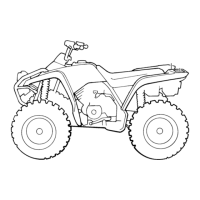
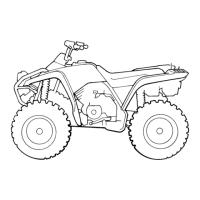
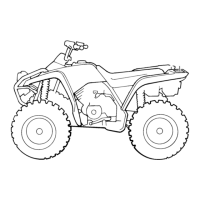
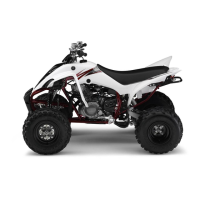


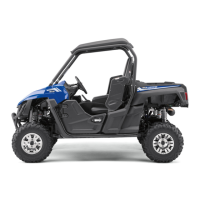
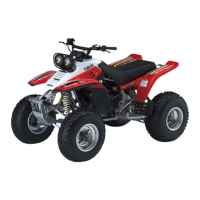
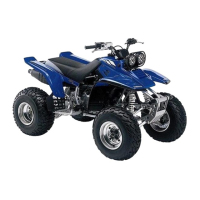
